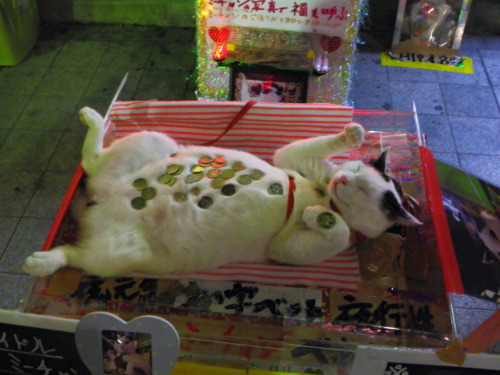Info - Blog Posts
Commission Update:
‼️I will be opening commissions as soon as I have a sheet prepared for what I'll offer / examples.‼️
I will be lowering some of my prices now that I complete most things relatively quickly. I am disabled so commissions can take up to a month on rare occasions depending on my health. Thank you for your understanding and patience!
Papa needs a new display tablet because the iPad is no longer reliable for making my comic.
If you want to commission me ONCE I OPEN THEM please email me with the email listed on my caard. I will make a post and link the caard and page accordingly once its all set up. I will reply to questions on here if you have them, but please note that if your blog looks freshly made with no customization and it feels like you're a scammer- I won't reply. Scams are rampant anymore, so I feel like this is reasonable.
Idk the time frame for this but if you want some cool anime/manga styled art? I gotchu and there will be many options with varying price points so you can get SOMETHING within your budget! I also can do payment plans for my most expensive options. :)
I only take PayPal at the moment, but if you need another payment avenue I can look into different options as well!
Thank you so much, I love y'all, and if you're curious about my work you can check out my art tag on my blog! 🥰
(Please note I do not draw not safe for work of any kind, I am strictly a SFW artist. I will list what I will and will not draw accordingly on my caard as well. Please respect my boundaries with these things, I hope to work with y'all real soon! 🌟)
hot artists don't gatekeep
I've been resource gathering for YEARS so now I am going to share my dragons hoard
Floorplanner. Design and furnish a house for you to use for having a consistent background in your comic or anything! Free, you need an account, easy to use, and you can save multiple houses.
Comparing Heights. Input the heights of characters to see what the different is between them. Great for keeping consistency. Free.
Magma. Draw online with friends in real time. Great for practice or hanging out. Free, paid plan available, account preferred.
Smithsonian Open Access. Loads of free images. Free.
SketchDaily. Lots of pose references, massive library, is set on a timer so you can practice quick figure drawing. Free.
SculptGL. A sculpting tool which I am yet to master, but you should be able to make whatever 3d object you like with it. free.
Pexels. Free stock images. And the search engine is actually pretty good at pulling up what you want.
Figurosity. Great pose references, diverse body types, lots of "how to draw" videos directly on the site, the models are 3d and you can rotate the angle, but you can't make custom poses or edit body proportions. Free, account option, paid plans available.
Line of Action. More drawing references, this one also has a focus on expressions, hands/feet, animals, landscapes. Free.
Animal Photo. You pose a 3d skull model and select an animal species, and they give you a bunch of photo references for that animal at that angle. Super handy. Free.
Height Weight Chart. You ever see an OC listed as having a certain weight but then they look Wildly different than the number suggests? Well here's a site to avoid that! It shows real people at different weights and heights to give you a better idea of what these abstract numbers all look like. Free to use.
Valravnen is less of a vættr and more of a fairytale creature. It's only known from medieval folk songs, and only from Denmark.
Valravnen shows up in two folk songs: The appropriately titled "Valravnen" and a version of "Germand Gladensvend," where Gammen is replaced by Valravnen. In the self-titled song, valravnen is a human who has been cursed to become a raven and is only returned to his human body when he drinks the blood of a baby. In Germand Gladensvend, valravnen is a monstrous bird who helps the main characters, but asks for their first-born in return, whom he then eats - he is, however, killed by the child's mother before it is revealed why he ate the child.
Even in the song commonly known as "Valravnen," this word only shows up in two of the nine versions of the song. In the other versions, the character is referred to as Wild Raven, Salmand Raven, or Verner Raven (Salmand and Verner being human names).
According to folklorists Holbek & Piø, "valravn" (battlefield raven) is not the original name for this figure, but is instead a misunderstanding of the more prevalent name "vilde ravn" (wild raven), as the figure never appears to have had anything to do with the battlefield, and "wild raven" is a far more common moniker in medieval sources.
However, during the early-1800s nationalistic romanticist wave, poet Adam Oehlenschläger showed a clear preference for the name "valravn" and chose to exclusively use that name in his reworkings of the folksongs. By the time folklorist Svend Grundtvig started his work, by the mid-1800s, "valravn" had overtaken the earlier "vilde ravn" name in popularity.
It is Holbek & Piø's opinion that valravnen is closely related to the werewolf, since they're both transformed humans who can be freed by drinking the blood of an infant, a belief that seems exclusive to Southern Scandinavia.
According to some modern authors, valravnen is a raven that haunts the battlefield, but I have not been able to trace back the origins of this belief. It seems fairly recent, and appears to be a result of the creature's name, more than its actual folkloric presence.
The heraldic combination of a wolf and a raven has been referred to as a valravn. This has seemingly nothing to do with the folkloric valravn, just as a heraldic antelope has nothing to do with a real life antelope. It does lend some credence to the idea that the valravn and the werewolf are related, though. The werewolf is also rarely described as "varulv" in folk songs, but is more often described as "vilde ulv" (wild wolf) or "grå ulv" (grey wolf).
Sources:
Holbek & Piø (1967) "Fabeldyr og Sagnfolk"
Poul Lorenzen (1960) "Vilde Fugle i Sagn og Tro"
Hooooowww did people 1) hear the folksong Valravnen about a knight who's been transformed into a bird (likely an eagle, not a raven) and can only break the curse by killing a baby, 2) see that one (1) now-extinct noble family referred to their heraldic beast, a wolf/bird, as a 'valravn', and 3) read one single 1800s countryboy's explanation that valravnen is like an evil valkyrie, and SOMEHOW extrapolate from those three wildly unrelated sources that "The Valravn" (because it's never a folkloric concept with different interpretations, it's always a single specific creature) is a were-wolf/raven who haunts battlefields to drink the blood of slain warriors????
Please stop depicting 'the' valravn when you don't even know what it is, I'm begging on my fucking knees, I hate the way recent Danish folklore-inspired popculture has latched onto this figure and keeps depicting it in wilder and wilder ways😭😭
If you want a folkloric evil bird creature in your story please just use a fucking dragon or gammen. Use a damn cockatrice or vættehane, idgaf. Please just stop muddying the already-confusing lore of valravnen. The figure has been abused enough already and you are making my hobby as a folklorist very difficult😥
Valravns - Behavior
This is just my personal take on valravns. Many elements present here are not found in the source material and instead are inferences or were wholly invented by me. Feel free to use these ideas for your own valravn or valravn-inspired characters!
~~~
By the nature of their existence, valravns are intelligent and dangerous creatures. A hunger for human hearts does not easily lend itself to a charitable personality. Their hunger dictates their every action.
They are experts at fighting in their many forms, striking precisely where and how they need to. Most of the time, however, valravns pick alternatives to outright violence. A clever predator does not need to hunt prey, all it needs to do is trap it.
A valravn always has some sort of deceptive plot in mind. They have a habit of using trickery in their words or only telling half-truths when making deals with mortals. Unlike the fae, this is not a case of magic compelling them to do so. They simply have a sick sense of humor, taking joy in the despair of the mortals they have tricked.
Valravns can either be nomadic or have a set territory. Typically, younger ones are nomadic while older ones settle, but this is by no means definite. Nomadic valravns fly from one bloodied battlefield to the next, something that is easy for their keen senses to find. Settled valravns typically take up some remote locale, like a forest or island, and reign it with iron claws and beak.
Valravns, much like mundane ravens, are mostly solitary. They may take on a mate, typically another valravn, but sometimes some other monster, or rarely even a human. Valravns are fiercely loyal to their mate, to the point of madness. Anything less than perfect for their other half is unacceptable and must be corrected. A valravn separated or, gods forbid, denied their mate would be a truly twisted and insane monster indeed.
Valravns may also be accompanied by their young. These chicks may be naturally born, humans they turned into their own, or even a mix of both. Their young typically accompany their parents until they reach maturity, at which point they leave their parents' side and strike it out on their own.
Valravns - Appearance
This is just my personal take on valravns. Many elements present here are not found in the source material and instead are inferences or were wholly invented by me. Feel free to use these ideas for your own valravn or valravn-inspired characters!
~~~
The valravn is a liminal being, and each one is unique in appearance. Some appear as gigantic, eight-foot-tall raven raptors, while others are griffon-like hybrids of ravens and wolves. To complicate this matter, valravns are shapeshifters and have numerous forms for different occasions. They may blend into the environment and travel unseen as a mundane raven, then later take on a monstrous form to attack prey. The only consistency between all valravns' true forms is that they all have corvid traits in some way. They may have wolf traits as well, but this is not always the case.
Some valravns are capable of taking on a human form. They tend to give themselves armor when they do so, giving the impression that they are turning into a knight. This guise is not perfect, as there will always be something slightly unsettling and not quite right about them. While a valravn disguised as a raven can remain unassuming indefinitely, a valravn disguised as a human will inevitably be found out.

Scandinavian tales and creatures
Valravn are created when a raven eats the heart of a warrior who was slain in battle. The raven gains the knowledge of the warrior and the ability to shift into human form. These creatures perform malicious acts such as tricking people and leading them astray.

Spark form #5: Meet the Nachtkrapp! A bird from German folktales that is said to bring death with its eyes and disease with its wings, it also enjoys children as its meal.
Nachtkrapp sparks are usually more nocturnal and prone to be powerful magicians. Do not cross one because not even death will give you an escape from their wrath.
Many more spark forms are on their way! Hope these help you all to make your own spark OCS for the comic!

the nachtkrapp, or “night raven,” is a German/Austrian legend about a huge and eyeless bird that would steal children away in the night. its wings were full of holes that could cause the watcher to become diseased if they looked into them.
night ravens are rare to begin with, and even in the massive bastion that is Monster City there are few to be found–and those that are there tend to hide from their dark reputation, calling themselves spirit ravens, or Gaelic courtiers to fey.

The enormous night raven, a nocturnal creature meant to be feared by children.

mythology aesthetics
VALRAVN
In Danish folklore, a valravn is a creature originating from ravens who consume the bodies of the dead on the battlefield, and are capable of turning into the form of a knight. When a king or chieftain was killed in battle and not found and buried, ravens came and ate him. The ravens became valravne, and the valravne that ate the king’s heart gained human knowledge and superhuman powers.

The Nachtkrapp is a boogeyman figure From the folklore of Germany and Austria. It is most often described as a huge raven with empty eye sockets and holes in its wings. Looking into the Nachtkrapp’s empty eyes will cause immediate death, while looking at the holes in its wings can cause illness and disease.
The Nachtkrapp is most often said to snatch up wayward children, taking them back to its nest where it will tear off their limbs, rip out their heart and eat them. Other versions of the story exist in places like Hungary, Poland and Russia, where the Nachtkrapp is described as more closely resembling an owl or heron.
Image source.
Monster master list.
Suggest a spook.

Inktober day 8
In Danish folklore, a valravn (Danish "raven of the slain") is a supernatural raven. The ravens appear in traditional Danish folksongs, where they are described as originating from ravens who eat the bodies of the dead on the battlefield, as capable of turning into the form of a knight after eating the entire heart of a child, and, alternately, as half-wolf and half-raven creatures. … No folclore dinamarquês, um valravn (dinamarquês “corvo do morto”) é um corvo sobrenatural. Os corvos aparecem em canções folclóricas dinamarquesas tradicionais, onde são descritos como originários de corvos que comem os corpos dos mortos no campo de batalha, como capazes de se transformar na forma de um cavaleiro depois de comerem todo o coração de uma criança e, alternadamente, como criaturas meio-lobo e meio-corvo.
#danish #raven #valravn #inktober2018 #ink #Inktober #mythical #mytology #mythologicalcreature #myth https://www.instagram.com/p/BorfbhlAWjs/?utm_source=ig_tumblr_share&igshid=u6jhyk7g91g

The Nachtkrapp is a raven-like creature found in Germany. The Nachtkrapp is described as an eagle-sized raven, with either no eyes or holes where the eyes should be that if looked at will cause death and holes in its wings that if seen will cause illness. The Nachtkrapp is said to hunt for children at night and rip their limbs off and pluck out their hearts with its sharp beak. Nachtkrapp means “Night Raven” in German and there is even a kind version of this creature called the Guter Nachtkrapp or “Good Night Raven” that will sing children to sleep.
Der Nachtkrapp
#BlackForestthings
The night is here, the Krapp is near~ Stay at home tonight~ But do I not stay at home he pulls me in his world~
Der Nachtkrapp or Nachtkrabb is a horror figure in children’s stories. It’s common in the southern German folkslore. He’s portrayed as a raven like creature and is said to take away the children roaming the streets at night and devouring them.
Another version is he visits the naughty children at night to take them away and devour them.

mythology aesthetics
NACHTKRAPP
In German folklore, the Nachtkrapp (“night raven”) is a giant, nocturnal raven-like bird. Similar legends exist in Austria, Hungary, the Czech Republic, Poland, and Russia. The Nachtkrapp leaves its hiding place at night to hunt. If it is seen by little children, it puts them in his bag and takes them away, or abducts them into its nest and devours them. The Guter Nachtkrapp (“good night raven”) is a rare benevolent version of the tale, who enters childrens’ rooms and gently sings them to sleep.

By request, a Nattramn (night raven) The Nattramn is the ghost of a sinner who is cursed to rome the skies in the form of a raven. The only way for a nattramn to find peace is to find the tomb of christ. They can only fly at night.

NAME: Valravn (Pl: Valravne)
RARITY: ★★☆☆☆
THREAT LEVEL: ★★☆☆☆ | Primarily a concern if they’re after you. But don’t look them in the eyes or you’ll share in their vengeance quest.
HABITAT: Most frequently the woods and in mountainous forests.
DESCRIPTION: Valravne were once ordinary ravens or other corvids. Only after they feed on the heart of someone who was murdered will they become something else – a vengeful bird with eyes that glow red or purple with fury. Though still technically ravens, these birds now have part of the deceased person’s will inside of them, and in addition to playing deadly tricks on unsuspecting people, they will stalk and torment their killers, driving them insane and eventually to their death. They’ll stop at nothing to meet this goal and may even force you into helping with the task by staring into your eyes. Since it isn’t unusual for several birds to pick at a dead person’s body, there are cases where a whole flock of valravn are created from a single person’s heart; these are the most deadly for the murderer to contend with.
Because valravne are live, mundane animals with the essence and desires of the dead corrupting them, they themselves are not spectral. It’s more akin to possession. As such, both rangers and mediums will be able to feel their presence. Once a valravn slays its killer, the spirit will be at peace and disappear, leaving behind a confused raven. While valravne were originally observed as being ravens or less commonly crows, every once in a while another related bird species will end up becoming one, such as a blue jay or grackle. These smaller birds pose somewhat of a less physical threat.
ABILITIES: Valravne are, in many ways, ordinary ravens. They just have an insatiable desire for revenge, and that drives their actions even when beyond their own understanding. They have animal intelligence, but the spirit inside of them guides them in clever ways. Some misinterpret this as the valravn having supernatural intelligence, but that’s not quite the case. Valravne can feel the presence of their killer, though this grows weaker with greater distance; as such it can take them a while to find their target. Meeting a valravn’s eyes for a prolonged stare will fill you with vengeance for their killer, though you won’t know their identity. Valravne have stirred people into violence with their gaze, even making them commit murder themselves, but that anger is only directed toward the killer or killers.
WEAKNESS: There are ways to be rid of valravne, such as striking them with a silver weapon, but they’re crafty and swift, making this a difficult task. They can be killed like an ordinary bird, but again, this is difficult in practice. Certain charms may prevent valravne from attacking, but this is a temporary measure, and as soon as the targeted person removes the charm or it becomes worn out, they are vulnerable again. The best solution for a valravne problem is to get help from an exorcist who can pull the volatile spirit out of the bird – forcing the spirit to move on and allowing the raven to live. Not all exorcists would find this ethical considering it’s helping a killer over their victim; they might not see it as helping the living over the dead.
OTHER VARIANTS:
Vilde valravn: Sometimes the killer of a valravn will die in another way, or their lifespan will reach its natural conclusion. So what happens to a valravn that doesn’t get the opportunity to achieve vengeance? The hatred in the spirit’s heart continues to fuel its existence, leaving the valravn stuck on the earthly plane. These valravn grow incredibly angry and wild, and eventually stop caring about distinguishing between their killer and others who just happen to have killed anyone in the past. They’ll read someone’s heart and, if assessed to be murderous, come at them with all of the fury they reserved for their killer.

Jb 11/18/17 mythical beasts day 6 Valravn(e) Wiki:
According to Danish folklore recorded in the late 1800s, when a king or chieftain was killed in battle and not found and buried, ravens came and ate him. The ravens became valravne. The valravne that ate the king’s heart gained human knowledge and could perform great malicious acts, could lead people astray, had superhuman powers, and were “terrible animals”.
In another account, a valravn is described as a peaceless soul in search of redemption that flies by night (but never day) and can only free itself from its animal countenance by consuming the blood of a child.

In Danish folklore, the valravn is a supernatural bird that can take on the form of a knight or a wolf. They were first mentioned in the 1800s, when it was said that ravens who feasted on the bodies of dead kings or chieftains would become valravne.
Valravne are often described as malevolent creatures, leading people astray and causing harm or even death. Some say they are restless souls who can only free themselves from their animal forms by consuming the blood of a child.
Image source.
Monster master list.
Suggest a spook.
I thought I had a pretty good grasp on what the mythical creature valravn from Danish folklore is but after diving deeper it’s more versatile than expected.

The version I was originally told is that a valravn (means “war raven” or more precisely “raven of the fallen” as in fallen people on the battlefield) is a normal raven that gained human intelligence by eating the flesh or brain of dead people after a battle. With the gift of intelligence also came the curse of only being able to fly at night. The only way to gain the ability to move around in daylight was to eat the heart of a young boy. Then the valravn would be able to turn into either a human or a raven/wolf beast and go wherever it wanted whenever it pleased.

But in the most well known song about valravens they’re all human men who were turned into ravens by either a witch or a female troll. A women was told her husband could only turn back if he drank her blood so she asks another valravn for help. It agrees in exchange for the life of her first son as soon as he has spoken his first three words, suggesting an infant would be too young.

In yet another version the valravn is a human who cannibalised dead people on the battlefield and turned into a raven or a human/raven/wolf monster that could only travel at night but would continue the cannibalism until it ate a young boy at which point it would be able to turn back to a human form.
So take your pick. You want a weird creepy raven that has decided it wants to be a human? Or a tragic story of someone who can only turn back by hurting their beloved? Or perhaps a wendigo style creature who became a monster after committing the taboo of cannibalism? Or maybe a mix? Because clearly Danish people in the past weren’t too worried about the valravn canon. The only generally agreed on lore is that they’re always male, can only travel at night and they eat humans or drink human blood to reach their final form or be cured.

The raven flies in the evening. It will have bad luck, for it can not have good.
If a raven eats the heart of an unburied king or chieftain that died in battle, the raven transforms into a valravn. This transformation gives the valravn great intelligence and superhuman strength, but it often turns them evil and manipulative as well. They are terrible creatures.
from Danske Sagn: Som De Har Lyd I Folkemunde. Image source.

hi, i’m your local laid off discord employee, here to talk about exactly how safe it may or may not be to talk about Political Activism on discord. my credentials here are that i was a senior member of discord’s trust & safety team, which is the team that handles bans, legal investigations, and legal compliance. (my speciality was in child safety, anti-grooming, and taking down CSAM, but i also worked occasionally in low level terrorism issues and assisted that team in investigations.) i also know most of the people still working there in these capacities.
the tldr and most important thing to know is: i do not recommend you plan, discuss plans, or use any kind of hyperbolic (or not) language about violence to government officials or anyone in that vicinity on discord. please use signal instead.
a discord trust & safety employee is technically able to see any message you’ve sent under your account, going all the way back to the beginning of your account. unless you have manually deleted a message, it is viewable to a tns employee. now: it is a tremendous part of being on a tns team that we did NOT invade user privacy without cause. cause was usually: another user reported something you said, and we thought the reported message indicated you might be doing something elsewhere that was illegal (for example: a user says “i’m talking to this girl but she’s in high school lol.” i would then try to find evidence as to whether or not there was a child safety issue there. in this example, we’d require clear admission of age from both the user and the alleged high school girl, and then clear evidence of sexual talk between them, and go from there.) finding evidence required looking though all of that user’s messages.
most of the tns team, as i know them, are pretty resolute about not going further in looking than would be needed for action. most of the tns team that i still speak to is very much on the side of blue. your general conversations are probably perfectly safe, and we were very good at figuring out quickly if someone has reported you maliciously. i don’t believe you need to worry too much about your porn and fanfic and all that.
HOWEVER: reported content must be investigated, and discord can, and has been, legally subpoenaed to turn over user information. again, this has nominally been in Very Evil cases (CSAM and grooming, school shooting threats, murder admissions, etc.) but that could change, either at the federal level, or at the discord policy level. discord, like any social media company, could easily be pressured or forced into taking on different internal policies that could get you in serious trouble if you are organizing violent or “illegal” resistance. if that happens, there is a scenario where this incoming administration is given access to your messages.
again: please do not organize your political or social resistance on discord from now on. please use signal to ensure your maximum safety. do not panic if you have already talks about things on discord: you can easily delete your messages, and that WILL remove from an employee’s view. do that and use signal from now on.
stay safe. i love you. 💕

lindt is being sued in a class action in the united states because they are one of MANY brands of chocolate that tested high for heavy metals. and this is despite lindt claiming their chocolate is "expertly crafted with the finest ingredients". no recall was issued after the tests came out. lead and cadmium can fuck the body over BAD.
lindt's genius defense is that they are going to stop saying the whole thing about being expertly crafted with the finest ingredients, so nobody can complain about the heavy metals in their chocolate anymore! and that makes it okay. source: trust me bro
(now please drop the lawsuit thanks)
consumer reports test results of a bunch of different chocolate brands <- original report being referenced
even more chocolate brands that were tested for heavy metals
This turned into a longer post than I anticipated but whatever.
Something I've been seeing quite often in the comments under helicopter posts that make it to the broader internet spaces is discussions on autorotation. These discussions are mostly incomplete information at best and outright wrong at worst. A lot of people seem to be able to recall it as a fact about how helicopters can glide to a safe landing, but aren't aware of the actual process. So here's a guide on what an autorotation is, how its performed, and some of the nuances to it.
For the uninitiated, an autorotation is a maneuver that every helicopter is capable of performing which allows it to land safely in the event of a power failure. Even more simply put - its how a helicopter glides.
I've already made previous posts about helicopter controls and some principles of flight which I recommend checking out first if you're unfamiliar with those.

Under normal flight the engine(s) drive the rotors at a constant flight rpm and all control is made by pitching (changing the angle) The blades to make more or less lift. Essentially the same process as sticking your hand out the window of a moving car and making rise or fall in the wind. However the rotors are experiencing a lot of drag (wind resistance) which requires the engine to produce a lot of power to overcome and maintain rpm.
When an engine failure occurs there is no more power driving the rotors and the high drag will cause the rotor rpm to start to decay rapidly. If nothing is done about that then the rpm will fall so low that the rotors will stall or worse and the helicopter will fall out of the air like a rock. Thankfully we have the option to autorotate instead of that outcome.
The first thing that happens to initiate an autorotation is to fully lower the collective. This will flatten out the blade pitch and minimize the drag on the main rotor, slowing the rpm decay. As the collective is lowered the cyclic will need to come aft slightly to prevent the nose from dropping. Also the right pedal will have been pushed in as the power failure initially occured to prevent yawing.
Now the helicopter is in a steep descent and the autorotation has begun. The airflow through the main rotor has reversed from normal flight. Instead of being drawn from above and expelled downward there is a diagonally upward flow of air through the main rotor.

Now the rotor rpm will begin to rise again thanks to the special design of the rotor blades. A rotor blade has an airfoil shape which is sort of like an elongated teardrop with the wider end on the leading edge. This shape minimizes drag and maximizes lift. But the blade is also slightly twisted. It has a positive pitch at the root where the blade attaches to the rotor hub which gradually transitions to a negative pitch at the tip.

Because of this twist and the difference in relative speed along the blade length (tip travels relatively faster than the root) the blades will develop three distinct regions. These are the driven, driving, and stall regions

The driven and stall regions at the blade tip and root are still producing drag but the middle driving region is actually producing lift, in an upward and slightly forward direction. This forward lift is the thrust that causes the rotor rpm to increase during an autorotation.
So now you are in a descent and recovering rpm back to the normal flight range. If you leave the collective fully lowered the rpm will now start to increase past the normal range and begin to overspeed. If the overspeed becomes too great the blades will be damaged and one could eject. Not ideal.
You have to manage the rpm manually to prevent it from becoming too low or too high. You also do this with the collective. Remember, to start the auto you should lower the collective fully to minimize rpm loss initially and then to start recovering it. As the rpm reaches the normal range the collective should be raised again just a bit to "catch" the rpm. Now you can manually adjust rpm with a tiny amount of collective movement. Rpms a little too fast? Raise it a bit. A little too slow? Lower it a bit. What this is doing is changing the size of the driven and driving regions of the blade, thanks to the twist. Lowering the collective grows the driving region and shrinks the driven region, and vice versa for raising it.
Now the helicopter is safely gliding and can be steered to a landing spot. There's not much to do until you're approaching the ground. The next maneuver will be the level and flare. The height at which you initiate the level and flare depends on the helicopter. Generally a larger helicopter will have more momentum and need to start the maneuver sooner.
Starting with the level off. You will be gliding with a high rate of descent and forward speed in an autorotation. The purpose of the level off is to drastically reduce the rate of descent. By using some aft cyclic input you will pull the nose up and put the helicopter in a level flight attitude. This causes the upwards lift of the rotor disc to act as a sort of parachute and arrest the descent.
Now with the descent rate minimal you apply more aft cyclic to pitch the nose up further and neutralize the forward speed. This is the flare and its the last opportunity to build rotor rpm in an autorotation.
Now you are just over the ground with little to no forward speed and the helicopter will start to settle and sink. Apply forward cyclic to level the helicopter parallel with the ground and use the pedals to keep the nose pointed straight ahead. Then you have whatever rpm is built up to cushion the landing. Smoothly raise the collective fully as the helicopter sinks to touchdown and the landing can be shockingly smooth.

What an autorotation really comes down to is energy. You often start at a high-ish altitude with some forward speed and this becomes the potential and kinetic energy you trade to power the rotors instead of the engine. The energy is an absolute requirement though. If you dont have enough of a combination of speed and/or altitude then an autorotation can be impossible. There are phases of flight and certain missions where you have to accept the risk of a power failure and rely on the crash-worthiness of the airframe.
Despite that, I've done a lot of engine failure procedures in small planes and helicopters and 9 times out of 10 I would rather experience a real one in a helicopter.















